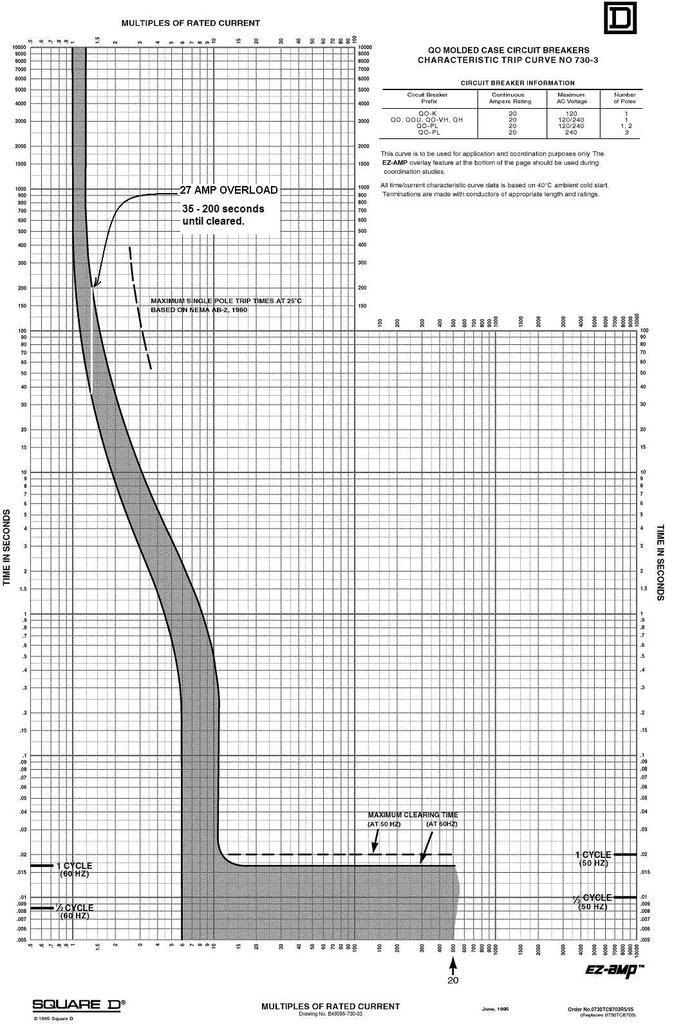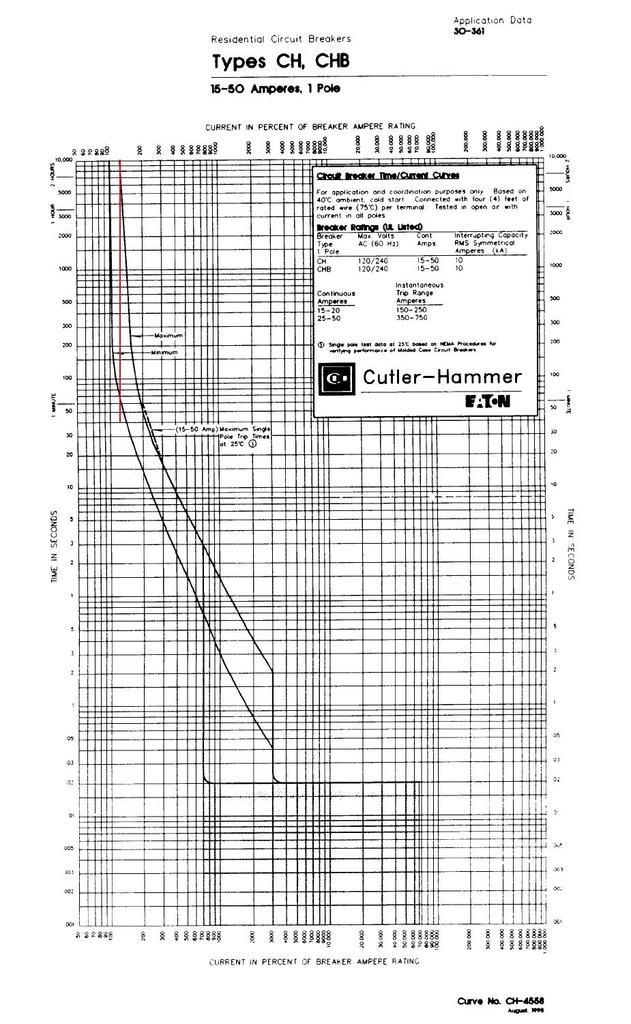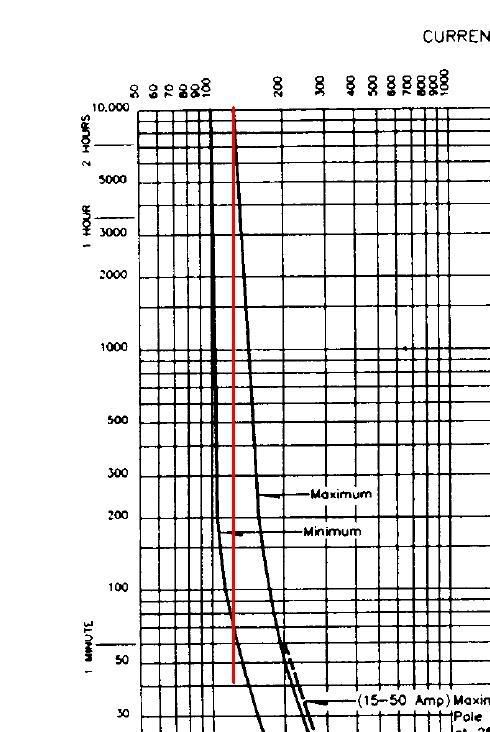flashlight
Senior Member
- Location
- NY, NY
- Occupation
- Electrician, semi-retired
While we were doing a service call at a hair salon that had had some
problems with overloads, we found that they consistently used two 13.5 amp
hair dryers on the same 20A branch circuit. This was not the circuit that was tripping (that turned out to be something else) !
We put an ammeter on this circuit and it was pulling 27 amps without the breaker tripping. We observed this for at least 10 minutes.
We double checked with another meter, same reading.
I remember years ago as an apprentice reading that CBs are designed
to carry 110 % of their rated load indefinitely. (Even though the designed load cannot exceed 80 %) That seemed odd to me at the time. But 27A is 135 %. I switched it with the breaker next to it, and same result. These are fairly new Cutler Hammer HACR. What gives ? Is this a bad batch ? We didn't have time for a full survey and had to schedule to come back when they weren't open. Before we left, I put a 15 in there so they wouldn't run 2 dryers.
I'd appreciate your insights.
problems with overloads, we found that they consistently used two 13.5 amp
hair dryers on the same 20A branch circuit. This was not the circuit that was tripping (that turned out to be something else) !
We put an ammeter on this circuit and it was pulling 27 amps without the breaker tripping. We observed this for at least 10 minutes.
We double checked with another meter, same reading.
I remember years ago as an apprentice reading that CBs are designed
to carry 110 % of their rated load indefinitely. (Even though the designed load cannot exceed 80 %) That seemed odd to me at the time. But 27A is 135 %. I switched it with the breaker next to it, and same result. These are fairly new Cutler Hammer HACR. What gives ? Is this a bad batch ? We didn't have time for a full survey and had to schedule to come back when they weren't open. Before we left, I put a 15 in there so they wouldn't run 2 dryers.
I'd appreciate your insights.



